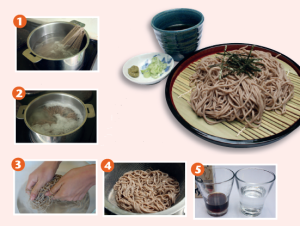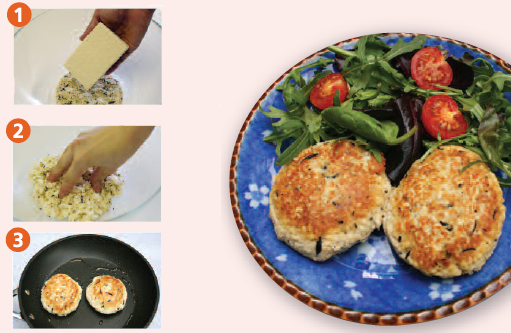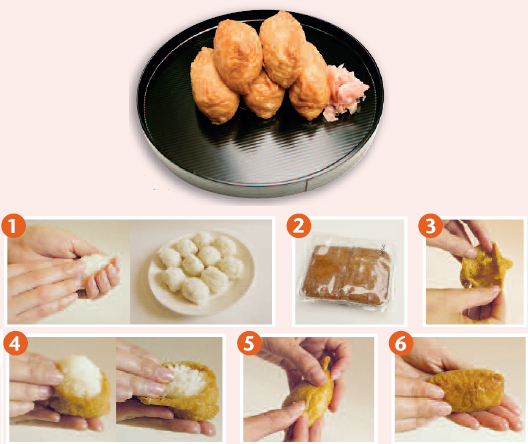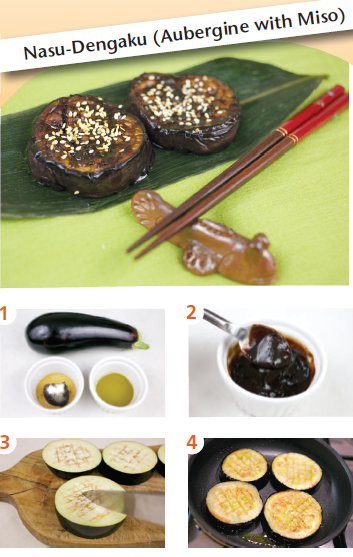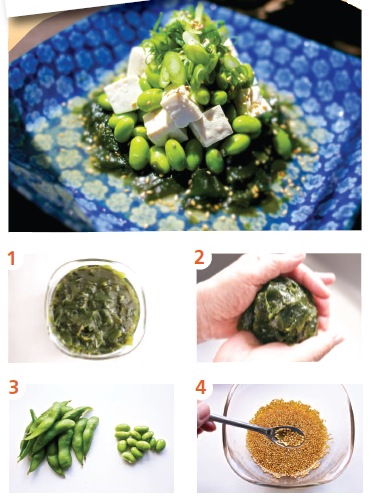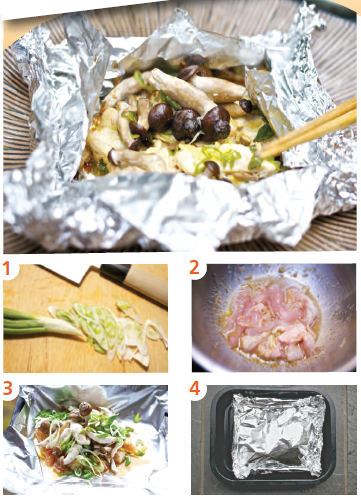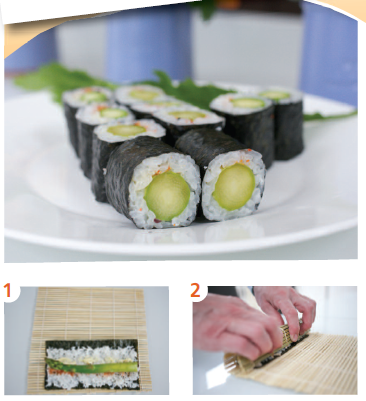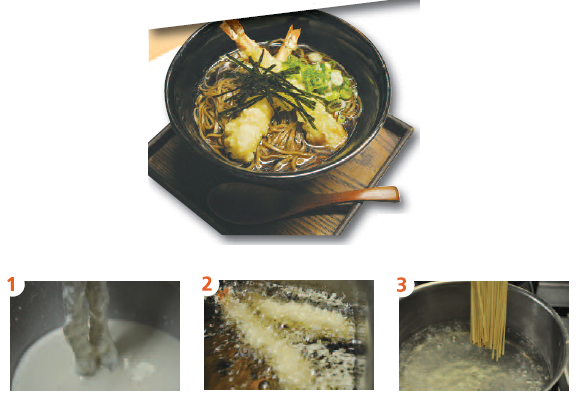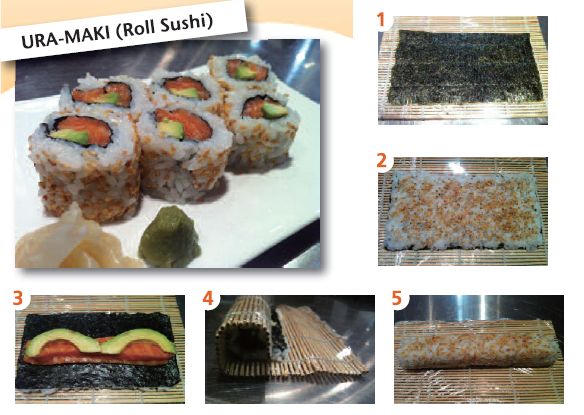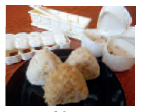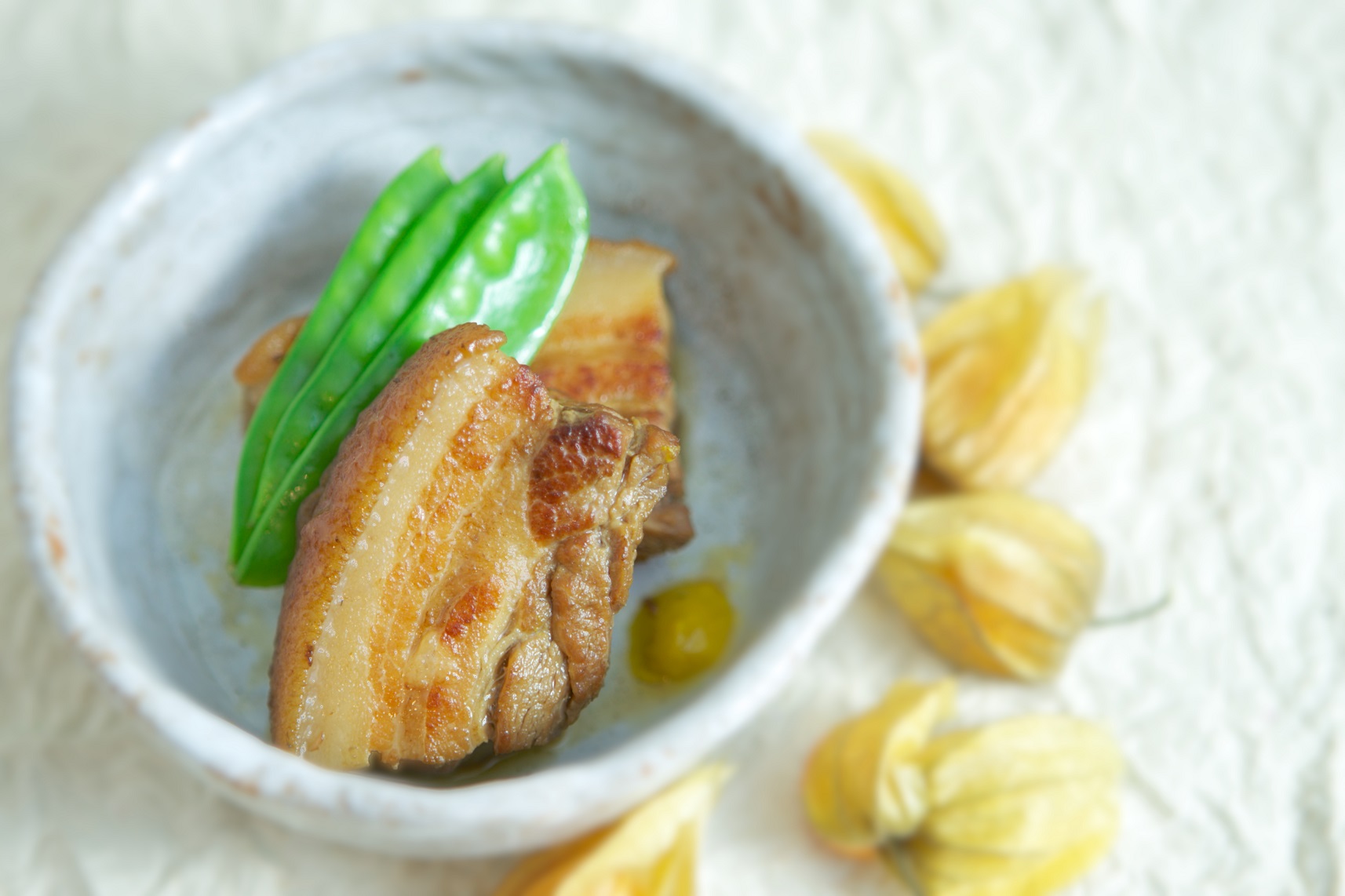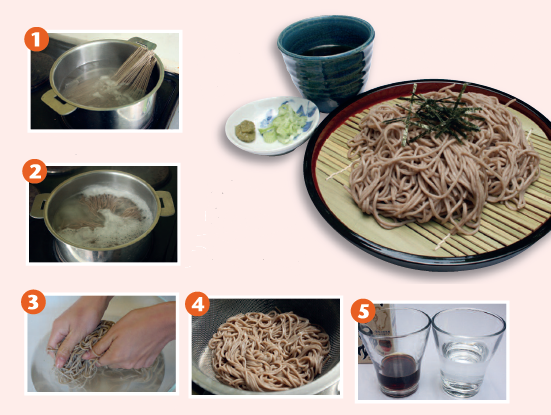
Soba noodles are very traditional form of Japanese cuisine. These noodles are made using buckwheat flour (the buckwheat plant is also calles “soba” in Japanese) as well as wheat flour, eggs, Japanese yams and water. They are low in calories compared to other carbohydrates, which makes them healthier and they also contain high levels of vitamin B1 that aids recovery after exertion. Soba can be eaten either hot or cold, with chilled soba and dipping sauce mainly being eaten in summer. Soba can be enjoyed in many different ways and with many different toppings such in a hot soup, with tempura as tempura soba or with raw egg as “tsukimi soba”. Soba noodles pilled on to a bamboo draining mat called “zaru” are known as “zaru soba”. In order to fully enjoy their aroma and smooth texture it is acceptable and even encouraged to slurp noisily when eating soba noodles!
Ingredients:
Soba 100g per person
Tsuyu 40cc (diluted with 80cc of water)
How to prepare:
1. Add the soba noodles to boiling water in a large saucepan.
2. When the water looks as though it is about to boil over, lower the heat and continuously simmer for around five minutes to get the desired firmness.
3-4. Quickly transfer the noodles to the draining mat (zaru) and rinse them thoroughly in cold water before draining away any excess water.
5. The sauce (tsuyu) shown in the photograph is the concentrated type and needs to be deluded with water before serving. For zaru soba a ratio of one part sauce to two parts water is recommended.
Copyright Japan Centre/Yuko Fujiwara

